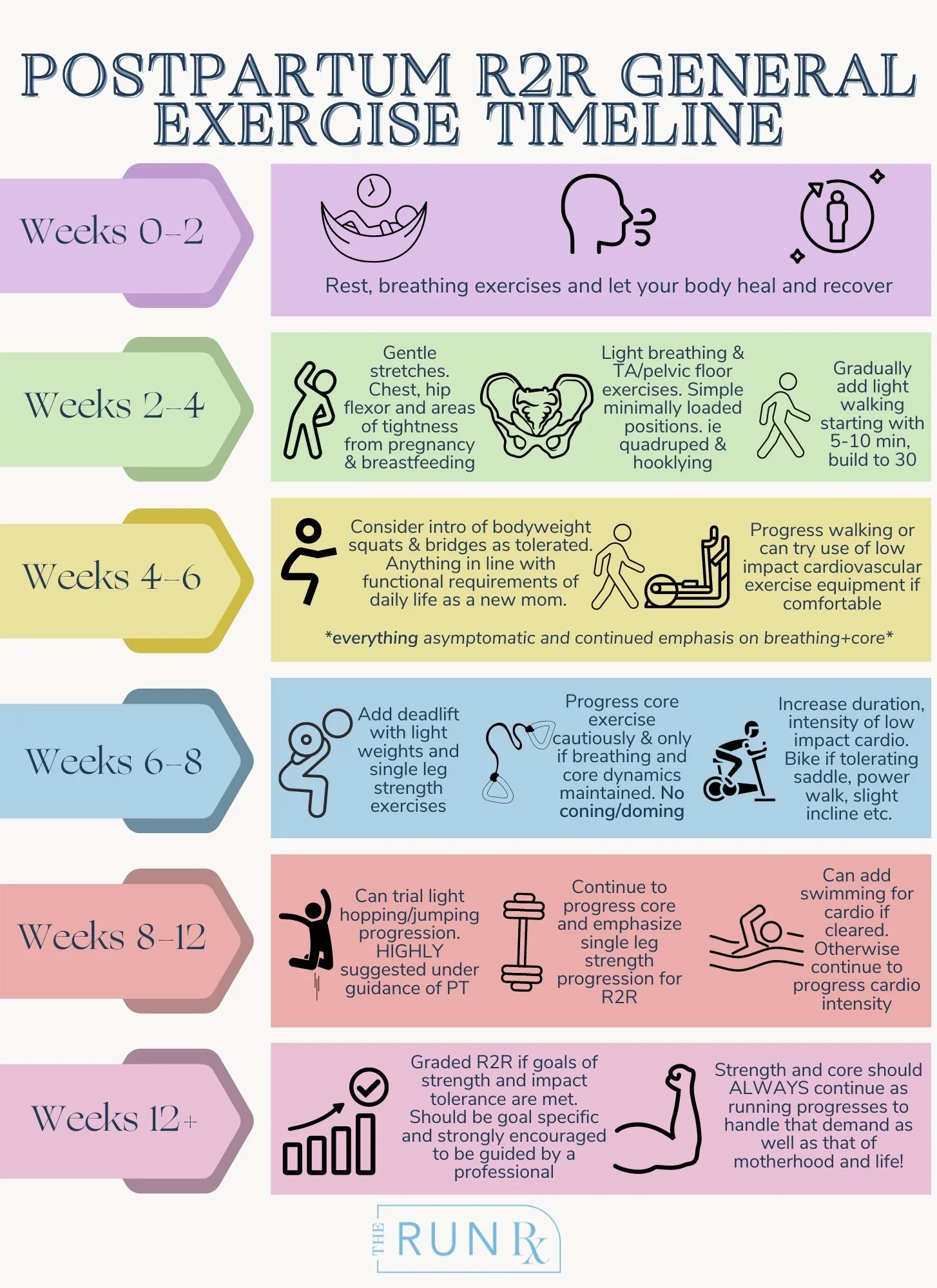Returning to Running Postpartum: Time-Based or Criteria-Based?
One of the biggest questions new moms ask us at The Run Rx in Boston is: “When can I start running again after having a baby?”
You go to your 6-week check-up and your doctor clears you for activity, but intuitively you know you shouldn’t just lace up and start where you left off. On the other hand, waiting 12 weeks (as some guidelines suggest) may feel unnecessarily long. So what’s the truth?
The reality: there’s no single “correct” timeline for returning to running postpartum. Instead, it’s about a criteria-based approach — looking at strength, function, and symptoms — not just weeks on the calendar.
👉 Want a step-by-step guide? Download our Postpartum Return to Run eBook for Boston runners.
How Long Do I Need to Wait?
Here’s what the research and clinical experience tell us:
Most experts agree: not before 3 weeks postpartum. Early tissue healing needs to occur first.
Some women can safely return before 6 weeks, if they meet functional criteria (see below). Studies show this does not increase risk of pelvic floor dysfunction or pain later on.
The average return to running is around 12 weeks. But again, this is just an average — some will be ready sooner, others later.
Bottom line: time matters, but readiness matters more.
Criteria Before Returning to Run
Healing looks different depending on delivery type. C-section and instrument assisted vaginal births usually require more recovery than uncomplicated vaginal deliveries. Make sure:
Vaginal bleeding (not menstruation) has resolved
You have clearance from your doctor if you had a C-section
Functional Readiness Checklist
Before running, test if you can perform these symptom-free (no pain, heaviness, or leaking):
Walk briskly for 30 minutes
10 single-leg squats per leg
10 single-leg calf raises per leg
Balance on one leg for 10 seconds each
Jog in place for 1 minute
Hop in place 10 times per leg
10 forward bounds
10 running man exercises per leg
👉 Not there yet? Our Postpartum Return to Run eBook walks you through progressions step by step.
If you experience leaking, pain, or pelvic heaviness — it’s time to work with a physical therapist who specializes in runners.
Progressing Your Running Postpartum
Once you pass the readiness criteria, how you build back matters more than when you start.
Begin with a walk:run progression — for example:
Warm-up walk 5 min → 10 rounds of 30 sec jog / 1 min walk → 5 min walk cool down
Or: Warm-up 5 min → 5 rounds of 1 min jog / 2 min walk → 5 min walk cool down
Keep runs every other day to start
Progress ratios gradually (1:2 → 1:1 → 2:1, etc.)
Once you can run 30 minutes continuously, 3x/week, increase:
Frequency (add another short run per week)
Volume (increase weekly mileage slowly: <20% per week, <30% over two weeks)
Intensity (speed/tempo is the last variable to return)
Remember: change only one parameter at a time.
Why This Matters for Boston Runners
Training postpartum isn’t just about getting back to mileage — it’s about safely building a foundation for long-term health and performance. Whether your goal is the Boston Marathon, a local 5K, or stroller-free runs along the Charles River, the same principles apply:
Respect your body’s timeline — not just the calendar
Prioritize strength and function before distance and speed
Build gradually to avoid injury and setbacks
Want to Hear a Real Postpartum Return to Run Story?
Our owner, Dr. Gabby Callagy — a physical therapist, runner, and perinatal specialist — has written openly about her own return-to-run journey after childbirth. In this blog series, she shares the ups, downs, and lessons learned while balancing clinical knowledge with lived experience.
Read her Pregnant + Postpartum Blog Series:
👉 My Postpartum Return to Run Blog
👉 1 Year Postpartum Recovery, Running and Training
It’s a great way to see how research, clinical expertise, and real-life motherhood come together to shape safe, sustainable training.
The Run Rx Approach
At The Run Rx, our Boston-based physical therapists specialize in helping postpartum runners:
Assess readiness with movement screens and gait analysis
Design safe, customized return-to-run plans
Address pelvic floor symptoms, hip strength, and bone health
Build long-term resilience for training and racing
📖 Ready to plan your return the right way? Download our Postpartum Return to Run eBook or book a free discovery call with our team today.






